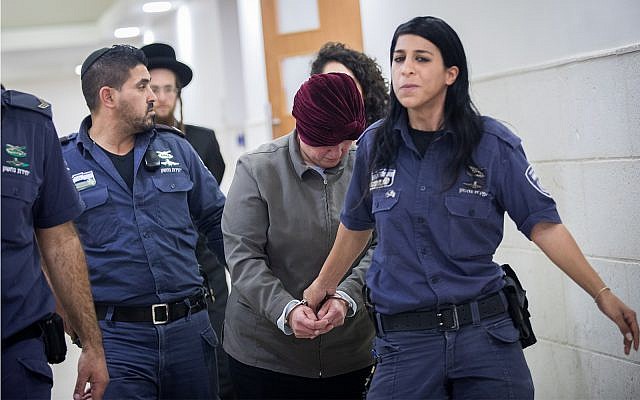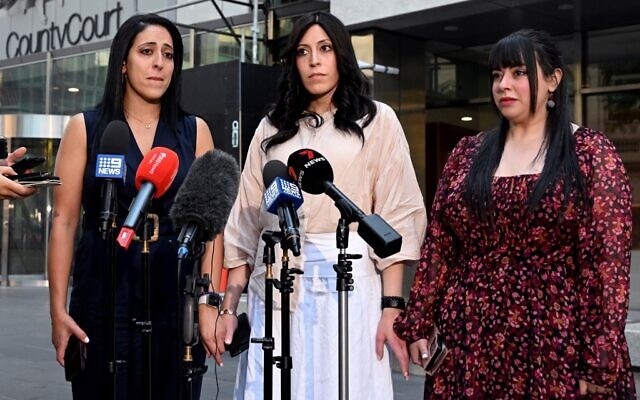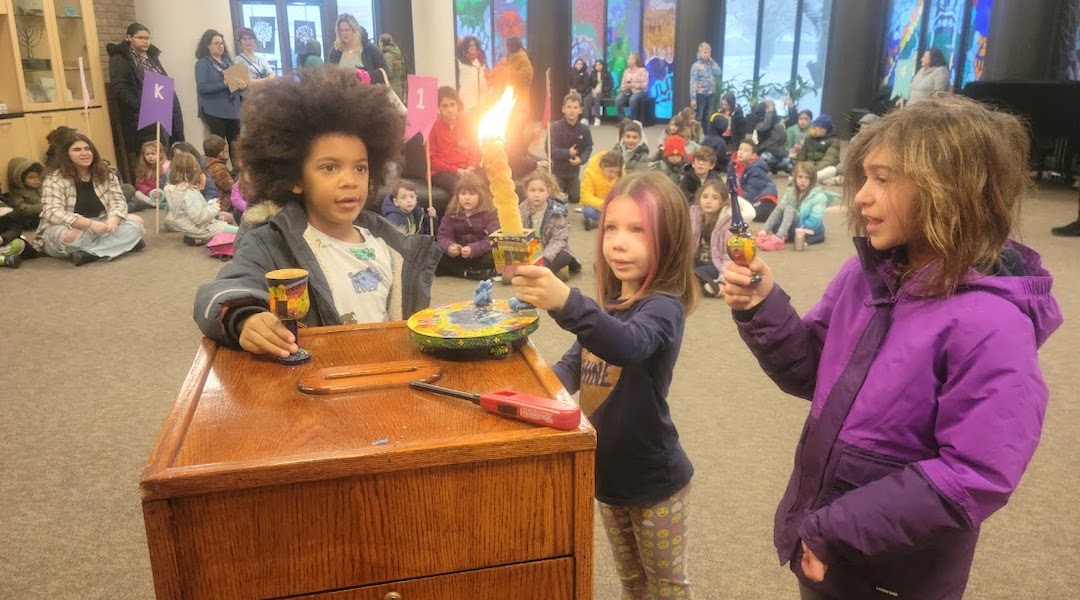(JTA)
— Living in Brooklyn, surrounded by synagogues and Jewish schools,
Rachel Weinstein White and her husband hoped to find a place where their
children could receive a Jewish education for a few hours each week.
But they knew they didn’t want to
enroll at a traditional Hebrew school associated with a local synagogue.
For one thing, White wasn’t interested at the time in participating in
prayer services, the main offering of most congregations. Plus, her
husband is Black and not Jewish, and they were not sure how well he or
their children would be welcomed.
So about eight years ago, she
started her own program together with a few families, setting up a
cooperative and hiring a teacher in an early version of the “learning
pods” that would become a pandemic fad.
“It was just this incredible,
magical year,” White said. “So many people started hearing about our
little class and asked to join that it became necessary to create a
second class. … It just kind of grew organically from there.”
Today, the school, Fig Tree,
enrolls about 350 children across three locations and plans are underway
to expand further. In hour-long classes on Sundays and weekday
afternoons, children learn about Jewish holidays and history, engage in
art and creative play, explore their local Jewish communities and learn
basic Hebrew, in a program that culminates in a b’nai mitzvah year. It
overlaps significantly with traditional Hebrew schools, but outside the
usual setting — a synagogue classroom — that has become a cultural
shorthand among American Jews for rote, uninspiring Jewish education.
That dynamic may be why Fig Tree is an outlier in a stark trend revealed in a new report:
Enrollment in supplemental Jewish schools — those that students attend
in addition to regular schooling in public or secular private schools —
is down by nearly half over the last 15 years.
Even as the estimated number of
Jewish children in the United States rose by 17% between 2000 and 2020,
enrollment in Hebrew schools fell by at least 45% between 2006 and 2020,
according to the report by the Jewish Education Project, a nonprofit
that promotes educational innovation and supports Jewish educators in a
wide array of settings.
The report identifies pockets of
growth, mostly in the small number of programs like Fig Tree that
operate outside of or adjacent to synagogues, and in schools operated by
the Hasidic Chabad-Lubavitch movement. But overall, according to the
report, just 141,000 children attend supplemental Jewish schools in the
United States and Canada, down from more than 230,000 in 2006 and
280,000 in 1987.
Some of the decline in Hebrew
school enrollment is countered by increasing enrollment in Jewish day
schools, where students study Jewish topics for at least part of every
day. The number of U.S. children attending Jewish day schools has risen
by roughly the same amount, 90,000, that Hebrew school enrollment has
fallen since 2006, according to the report, though a significant portion
of the increase stems from population growth in Orthodox communities,
where the vast majority of students attend day schools.
Miriam Heller Stern, a professor
at Hebrew Union College-Jewish Institute of Religion who was tapped to
help design the study, said the results suggest that, as with many
aspects of religious life today, Hebrew school enrollment cannot be
counted on as an act of obligation or tradition.
“There’s this idea that parents
send their kids to Hebrew school because they went to Hebrew school and
that’s a rite of passage in North America, but that may be a myth,” she
said. “People don’t want to push their kids to have to do the same thing
they did, necessarily, anymore.”
The report speculates about what
has fueled the enrollment decline — from demographic changes to shifts
in how American Jews think about countering antisemitism to increased
access to Jewish learning online — and also about what has allowed some
schools to thrive. It notes that all of the supplemental schools that
responded to its census said their schools help children feel connected
to the Jewish people.
“We believe that many factors have
led to the decline in enrollment of students in supplemental schools in
the last decade,” said David Bryfman, the Jewish Education Project’s
CEO. “However, it’s also a myth that all supplemental schools don’t
work.”
The group is planning a series of
online sessions with some of the dozens of researchers and practitioners
involved in the report, with one goal the sharing of success stories
identified by the survey. Of the six identified in the report, a common
theme is urging experiential, community-based learning. Some of the
promising models explicitly position themselves as infusing Jewish
content into child care, filling a pressing need for American families.
Still, it may be hard to counter the demographic realities of contemporary American Jews: Just a third of U.S. Jews in a 2020 survey
said someone in their household was a member of a synagogue. That was
the case even for the majority of non-Orthodox Jews who said they
identified with a particular denomination, a marker of traditional
engagement.
The waning of synagogue
affiliation is borne out in the Jewish Education Project’s report, which
found that more than 700 supplemental schools shuttered between 2006
and 2020 — most outright, though as many as 200 have survived in a new
form after merging.
Temple Solel, a small Reform
congregation in Fort Mill, South Carolina, shut down its Hebrew school
in recent years. The volunteer-run program had up to eight students at a
time, according to Russ Cobe, a lay leader.
“We sort of hit a point where we
weren’t able to sustain it,” Cobe said. “We only had a couple of people
teaching and students from a wide range of ages and they wouldn’t show
up every week. Also, our wheelhouse seems to be retirement age and
above. We don’t have a lot of young families.”
Hebrew school mergers offer one
possible approach to countering the enrollment decline. Two synagogues,
one Reform and one Conservative, located half a mile apart in Oak Park,
Michigan, established a joint school about seven years ago and called it
Yachad, which means “together” in Hebrew.
“One day a week we meet at the
Conservative congregation and one day a week we meet at the Reform
congregation, so we are keeping our kids involved in both,” said Gail
Greenberg, Yachad’s director. “My goal is to make it at the highest
common denominator. For example, all of our food is kosher so anyone who
wants to eat here can.”
The arrangement appears to be
working. Last year, about 90 students were enrolled, and this year,
enrollment is at 128, including 26 new kindergarteners, with even larger
numbers expected in the future.
Another set of programs has grown
dramatically in recent years: those affiliated with the Chabad movement,
which tend to operate even when small and cost less than synagogue
programs. Since 2006, the study says Chabad’s market share in terms of
enrollment has grown from 4% to 10%, and in terms of the number of
schools from 13% to 21%.
Those figures might represent an
undercount, according to Zalman Loewenthal, director of CKids, the
Chabad network of children’s programs. While the study says there are
some 300 Chabad programs in the United States, Loewenthal said he is
aware of at least 500 and perhaps as many as 600 — a number driven up in
the last decade amid a push by Chabad to launch more Hebrew schools.
His count is based on the number of customers purchasing the curriculum
offered by his organization, which is also new in the last decade and in
his view has contributed to improved quality among Chabad Hebrew
schools.
In general, non-traditional
approaches to Jewish education may be attractive at a time when American
families have packed schedules and competing needs, according to Stern.
“People want to be able to have
bite-sized pieces just like you sign up for a six-weeks art class, they
might want a six-weeks Jewish class,” she said. “In this atmosphere,
some communities are finding ways to be more modular and more flexible,
and meet people’s needs in different ways.”
Stern also said, referring to six
programs highlighted in the study as success stories, that the future
calls for programs to offer an “immersive” experience, meaning that
children become part of a community.
“They are getting something beyond
just knowledge,” Stern said. “They’re also getting connection and
belonging, which provides the foundation for something bigger in their
lives.”
Stern said she thought the report pointed to gaps in the way American Jewish communities allocate their resources.
“Supplementary education really
was abandoned as a communal priority,” she said. “Individual communities
had to find ways to fund it on their own. And I think that is part of
why we’re seeing a decline.”
Bryfman said he’s optimistic, both
about the power of supplemental schools and the potential for them to
generate new support from Jewish donors.
The Jewish Education Project had
sought outside funding to pay for its study and failed, he said. But now
that the numbers are clear, he is beginning to see interest from
philanthropies.
“I don’t want to count the dollars
before they’re granted,” Bryfman said. “But the study is already
beginning to have the desired effect of bringing more resources to the
field.”
Fig Tree isn’t set up to benefit
in a possible future of increased charitable investments in Jewish
education. That’s because the school is set up as a business — an
expression of confidence in its growth and to insulate itself from the
vagaries of philanthropy.
“It’s a very unusual model for the
Jewish education and I would argue a self-sustaining one,” White said.
“We don’t have to rely on fundraising… and we’re not beholden to some of
the other requirements that a nonprofit would necessitate, which allows
us to be nimble.”



















